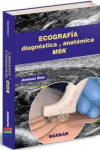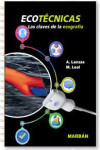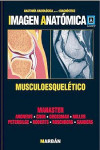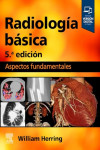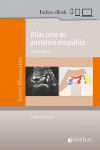TOMOSYNTHESIS IMAGING (SOFTCOVER)
Reiser, I. - Glick, S.
Producto agotado
Datos técnicos
- ISBN 9781138199651
- Año Edición 2017
- Páginas 257
- Idioma Inglés
Sinopsis
An innovative, three-dimensional x-ray imaging technique that enhances projection radiography by adding depth resolution, Tomosynthesis Imaging explores tomosynthesis, an emerging limited-angle tomographic imaging technology that is beingconsidered for use in a range of clinical applications, and is currently being used for breast cancer screening and diagnosis. While conventional mammography has been very successful in reducing breast cancer mortality, it is not perfect. A majorlimitation of mammography is that the recorded image represents the superposition of complex three-dimensional structures in the breast onto a two-dimensional plane, making detection and diagnosis of breast cancer challenging.
Tomosynthesis produces quasi-three-dimensional images that can significantly enhance the visualization of important diagnostic features. This book highlights the flexibility of tomosynthesis systems for new clinical applications, and provides a detailed discussion of the tomosynthesis acquisition process and the impact of physical factors. It explores such topics as acquisition parameters, system components, modeling, image reconstruction algorithms, and system evaluation.
Provides in-depth coverage of system design considerations, as well as image reconstruction strategies
Describes the current state of clinical applications of tomosynthesis, including imaging of the breast and chest, as well as its use in radiotherapy
Illustrates the merits of tomosynthesis imaging and its potential clinical applications in imaging of the breast and chest, as well as for radiation therapy
Divided into five sections, this text delves into the history and development of tomosynthesis. It introduces tomosynthesis imaging, discusses imaging system design considerations, and reviews image reconstruction algorithms that have beendeveloped for tomosynthesis. It also describes system evaluation methodologies, emphasizes current clinical applications, and examines the future direction for tomosynthesis.
Features
Provides a comprehensive treatment of technical aspects, system performance, and clinical applications of tomosynthesis imaging
Covers system design considerations, including acquisition parameters, system components, optimization, and modeling
Describes breast, chest, and radiation therapy imaging applications
Índice
Section I Introduction
The history of tomosynthesis
Mitchell M. Goodsitt
Section II System Design
System design and acquisition parameters for breast tomosynthesis
Stephen J. Glick
Detectors for tomosynthesis
Wei Zhao
Patient dose
Ioannis Sechopoulos
Tomosynthesis with circular orbits
Grant M. Stevens and Norbert J. Pelc
Tomosynthesis system modeling
Ingrid Reiser, Beverly Lau, and Robert M. Nishikawa
Section III Image Reconstruction
Filtered backprojection-based methods for tomosynthesis image reconstruction
Thomas Mertelmeier
Iterative image reconstruction design for digital breast tomosynthesis
Emil Y. Sidky
Section IV System Performance
Fourier-domain methods for optimization of tomosynthesis (NE Q)
Ying (Ada) Chen, Weihua Zhou, and James T. Dobbins III
Spatial-domain model observers for optimizing tomosynthesis
Subok Park
Observer experiments with tomosynthesis
Tony Martin Svahn and Anders Tingberg
Section V Clinical Applications
Clinical applications of breast tomosynthesis
Steven P. Poplack
Chest tomosynthesis
Magnus Båth and Åse Allansdotter Johnsson
Tomosynthesis applications in radiation oncology
Devon J. Godfrey, Lei Ren, Q. Jackie Wu, and Fang-Fang Yin
Future developments in breast tomosynthesis
Martin J. Yaffe, Roberta Jong, and James G. Mainprize
Index
Editor(s) Bio
Ingrid Reiser, PhD, is a research associate (assistant professor) in the Department of Radiology at the University of Chicago. After receiving her PhD in physics from Kansas State University in 2002, she transitioned into medical physics research whereshe witnessed the presentation of the first breast tomosynthesis images at RSNA 2002 (Radiological Society of North America). Tomosynthesis captivated her interest and she has since investigated many aspects of tomosynthesis imaging, such as computer-aided detection, system modeling, and objective assessment. Her research interests further include image perception and observer performance, as well as tomosynthesis and CT image reconstruction.
Stephen J. Glick, PhD, is a professor of radiology at the University of Massachusetts University Medical School and the director of the Tomographic Breast Imaging Research Laboratory. He earned his PhD from Worcester Polytechnic Institute (WPI) in 1991. Dr. Glick is the author of over 60 journal articles and 100 conference proceedings papers and 8 book chapters. Over the past decade, his research has been focused on 3D breast imaging techniques including digital breast tomosynthesis and breast CT with an emphasis on radiation dose, imaging technique optimization, advanced iterative reconstruction methods, detection studies for lesions and microcalcifications, and photon counting detector CT.
Reviews
"A comprehensive assessment of the current technology and application of tomosynthesis … the book can be read cover to cover without significant repeated material, but each chapter can be consulted and used as an independent reference on a specific aspect of tomosynthesis imaging. The experience and competence of all of the authors is evident. This is required reading for physicists and radiologists who are interested in learning about the fundamentals of the technology behind thefuture of diagnostic radiography and mammography."
—John M Sabol, PhD, GE Healthcare, Doody’s Review
Otros libros que te pueden interesar
- ¿Quiénes somos?
- Gastos de envío
- Política de privacidad
- Políticas de devolución y anulación
- Condiciones Generales de contratación
- Contacto
2024 © Vuestros Libros Siglo XXI | Desarrollo Web Factor Ideas





